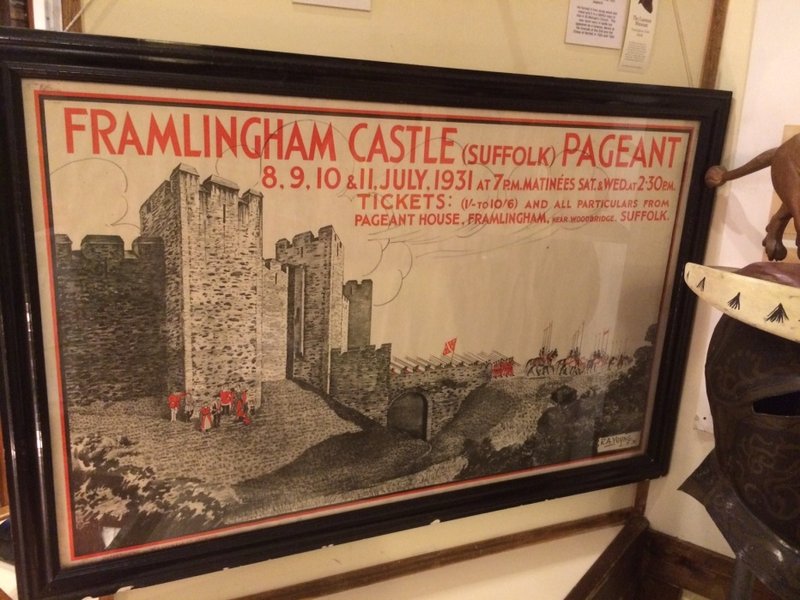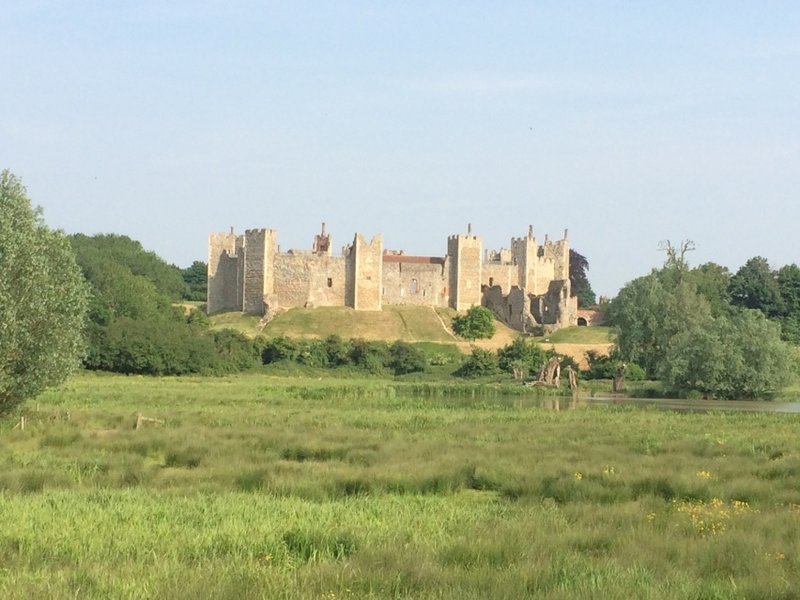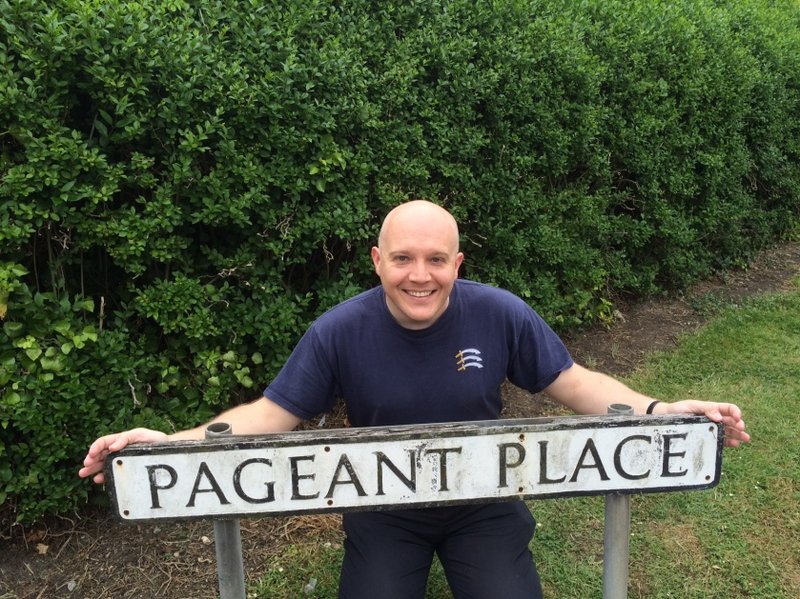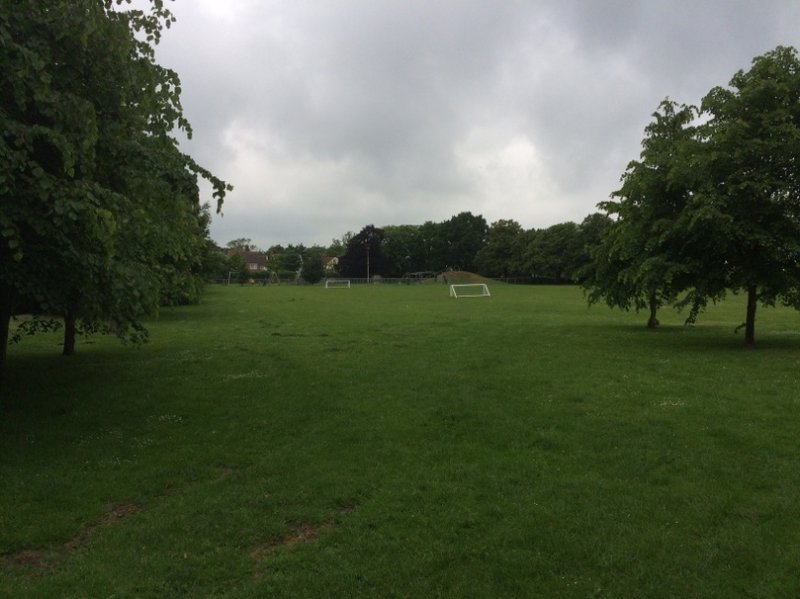Searching for the Framlingham pageant
I recently enjoyed a much-needed weekend away in east Suffolk, taking in, among other things, the Aldeburgh festival, Southwold pier and Framlingham castle. It was in the castle – or more specifically in the Lanman museum of local history within the castle – that I stumbled upon a poster advertising the Framlingham pageant of 1931.

Above: Poster in the Lanman
Museum advertising the Framlingham pageant.
Performed in the grounds of the castle, the pageant seems to have been like many others up and down the country in the interwar period. Tom has already done some detailed research into this pageant: there is a book of words and souvenir programme, and also reports in the local press to draw on. There were eight performances, with a temporary grandstand and a capacity of 2,000. The pageant was fairly typical of the period, with eight episodes ranging from a ninth-century encounter between King Edmund and Ivar the Dane to the procession of Sir Robert Hitcham’s pensioners in 1935. Though not large by the standards of some pageants, Framlingham made it into the national press, and may have been watched by more than 15,000 people in total (the population is little more than 3,000, even today).

Above: Framlingham Castle,
site of the 1931 pageant.
Later in the weekend, we stumbled on a cul-de-sac called Pageant Place, which presented an opportunity for a photo.

Above: Mark at Pageant Place,
Framlingham.
We were spotted taking the photo by an elderly lady who wondered – not unreasonably, perhaps – why we were taking the photo. We explained, although unfortunately I didn’t have any ‘Redress of the Past’ bookmarks to hand. Incidentally, a quick search on streetmap.co.uk brings up a number of roads with ‘pageant’ in the name, including two in Sherborne and one in St Albans, but it’s not always clear whether these were named after historical pageants. In the case of Pageant Place in Framlingham, however, there’s no doubt about the name, even though the pageant took place some distance from the road itself. The lady told us that Pageant Place leads to Pageant Field – and it turns out that the field was acquired for the town of Framlingham in 1933 using the profits from the pageant, which amounted to a healthy £360. The park is a public recreational space, with a playground and sports facilities.

Above: Pageant Field in
Framlingham.
These experiences in Framlingham prompted the reflection that I might not have noticed any of these things if it wasn’t for working on the ‘Redress of the Past’ project. Pageants have left their mark in many ways in towns, cities and villages across Britain, and it is surprising that, although not forgotten, they are still so little known today.
Mark Freeman
